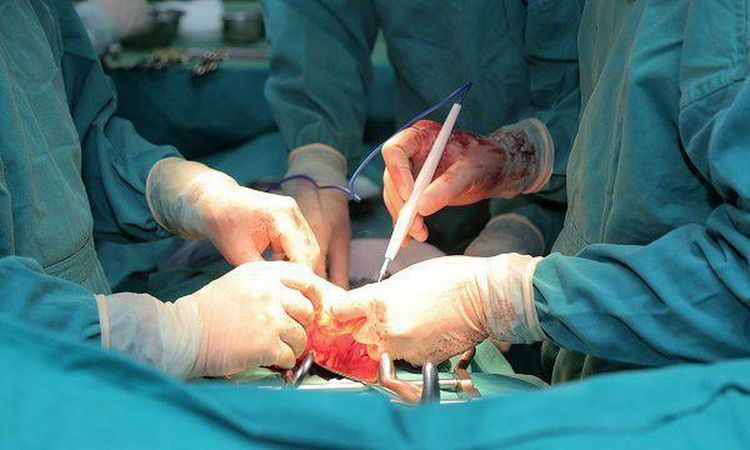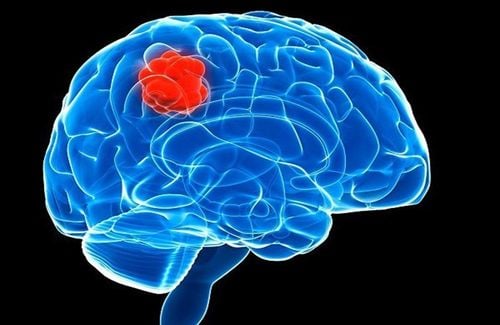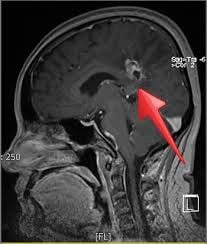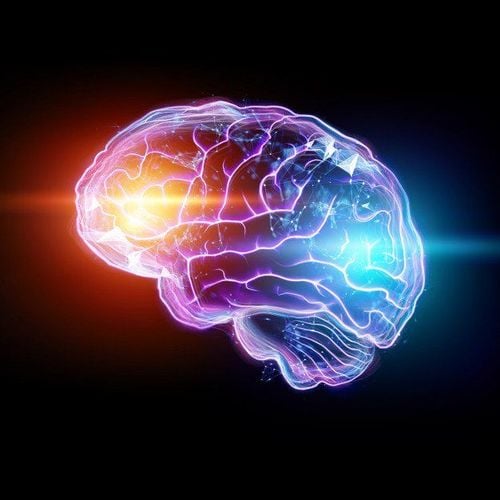This is an automatically translated article.
Brain tumors in children are one of the leading causes of death, in which posterior fossa tumors account for the highest rate of over 50%. Posterior fossa brain tumors are often primary tumors, which can be detected in young children. Treatment by surgical resection of the posterior fossa tumor is the best method to remove the tumor, but this area has many important organs, so surgery is also difficult.
1. Overview of brain tumors in the posterior fossa region
The structure of the posterior fossa region is created by the anterior part of the sphenoid body and the base of the occipital bone; behind is the lower part of the occipital mussel; The two sides are the posterior aspect of the temporal bone, the medial aspect of the mastoid process, and the lateral part of the occipital bone. In the posterior fossa, there are important components of the brain, including the cerebellum, medulla, pons, and cranial nerves from 5th to 12th nerve.
Posterior fossa brain tumor may originate in the urinary bladder. brain, brain stem, or cranial nerves. Causes of posterior fossa brain tumors are often unknown, mainly primary tumors and are related to genetic factors, in addition, tumors are secondary to metastases.
Common symptoms include
The patient presents with symptoms of increased intracranial pressure such as headache, which is common in most patients with brain tumors. Vomiting: Vomiting is often accompanied by headache, nausea is not related to eating and is usually seen in the morning.

Bệnh nhân thường xuyên nôn ói kèm đau đầu vào buổi sáng
For children: Seeing symptoms such as a larger head circumference than usual because brain tumors in the posterior fossa may be accompanied by hydrocephalus, enlarged fontanelles, and dilated skull joints. Cerebellar syndrome: Patients often stand unsteadily, walk unsteadily, poor coordination of movements, ataxia of movements such as overstepping or in the wrong direction, shaking hands when working. Tumor pressing on the brain stem can cause weakness, motor paralysis on one or both sides, may be accompanied by sensory disturbances, increased or decreased tendon reflexes. Paralysis of one or more cranial nerves: Manifestations such as compression of nerve VIII causing hearing loss, tinnitus, nerve VII causing facial paralysis ... Diagnosis of posterior fossa brain tumor is often difficult in children, because the signs are not easy to detect. When detecting suspicious signs, children should be examined and combined with imaging methods such as computed tomography or cranial magnetic resonance imaging to be diagnosed. Important functional exploration methods to determine the location and morphological characteristics of posterior fossa brain tumors.
2. Treatment of brain tumors in the posterior fossa region
Treatment methods for posterior fossa brain tumor include: Surgery to remove posterior fossa brain tumor, chemotherapy and radiation therapy.
2.1 Surgical treatment
Posterior fossa brain tumor resection is the best treatment. Removal of the entire tumor is the most effective radical treatment. In pediatric patients, if detected early, surgery can remove the entire tumor, and if the tumor is immature, chemotherapy and radiation therapy may not be necessary.
The application of neurosurgery technique significantly reduces the risk of death for patients, according to statistics before the advent of neurosurgery, about 50% of pediatric patients died when taking samples. Biopsy or surgical intervention in the posterior fossa.

Phẫu thuật cắt u não vùng hố sau (Hình ảnh minh họa)
2.2 Radiotherapy
The aim is to kill tumor cells, especially cells. residual tumor after surgical resection of the tumor. Radiation therapy can be alone or in combination with other methods, when radiation therapy, radiation dose varies depending on location, size and histopathological type.
However, this method has a large and long-term effect on pediatric patients, so the benefits and risks should be weighed before radiation therapy is performed. Some cases, if allowed, can be treated to relieve symptoms and wait until the child is older to conduct radiation therapy to reduce the risk caused by radiation.
2.3 Chemotherapy
Indicated in cases of high-grade malignancies in children, or as an alternative to radiation therapy for children under 3 years of age. However, chemotherapy has many undesirable effects, so it is necessary to consider carefully before using this method of treatment for pediatric patients.
When the application of the new posterior fossa brain tumor removal technique makes the removal of brain tumors in children easier than before, thereby helping children after surgery to reduce many serious complications, children have the opportunity to to develop normally like other children. Therefore, when there are abnormal signs in the child suspecting a pathology, parents should take the child to a reputable medical facility for early examination, diagnosis and treatment.
To register for examination and treatment at Vinmec International General Hospital, you can contact Vinmec Health System nationwide, or register online HERE













